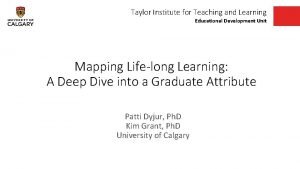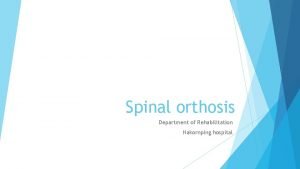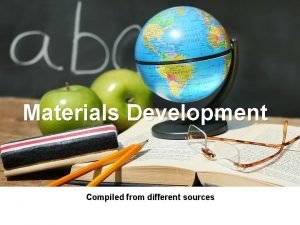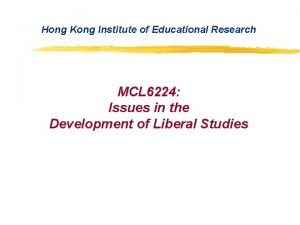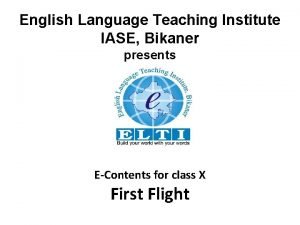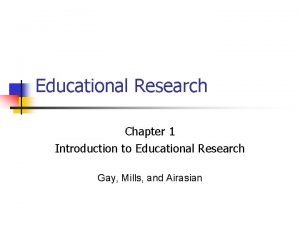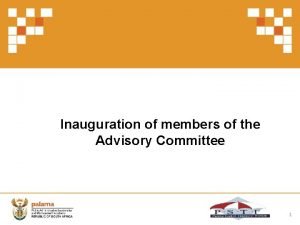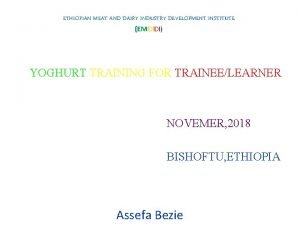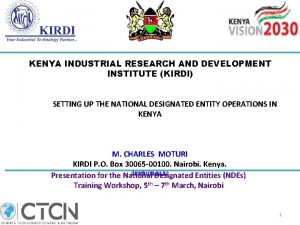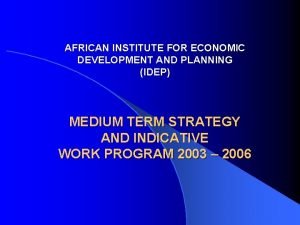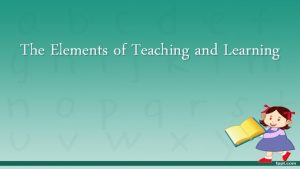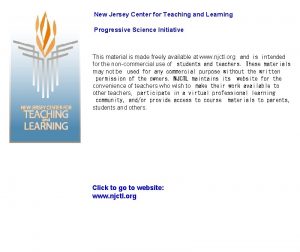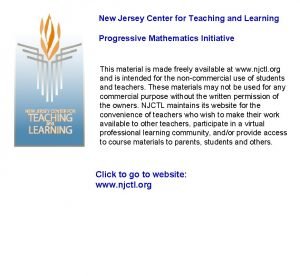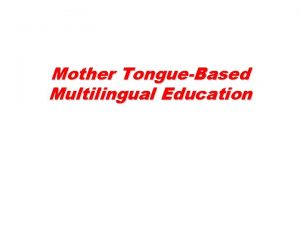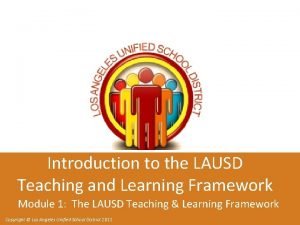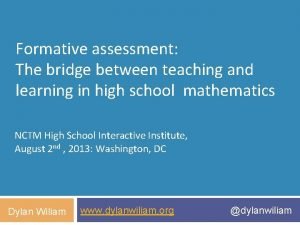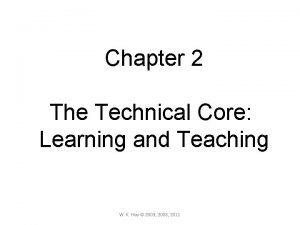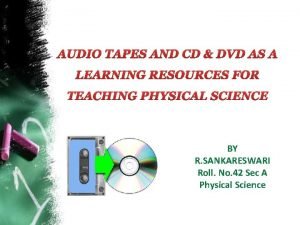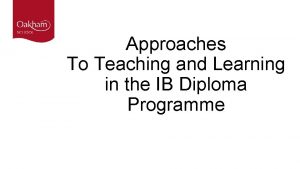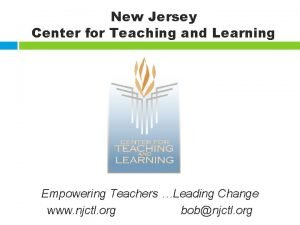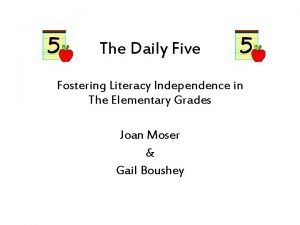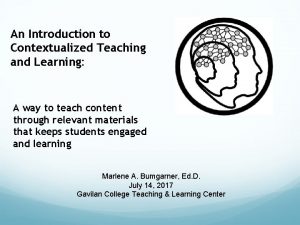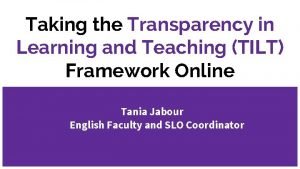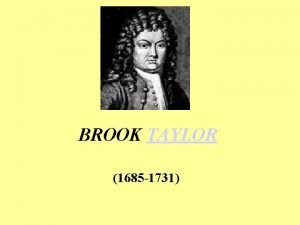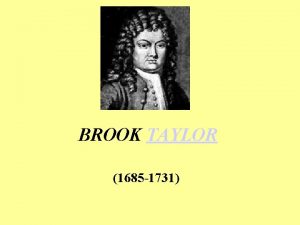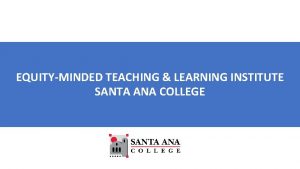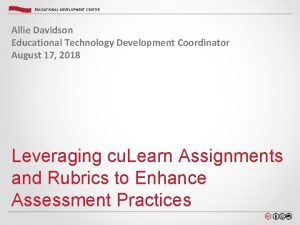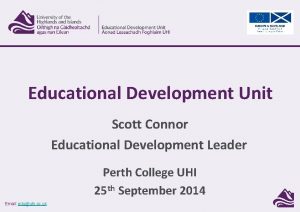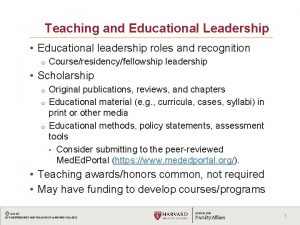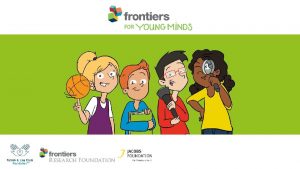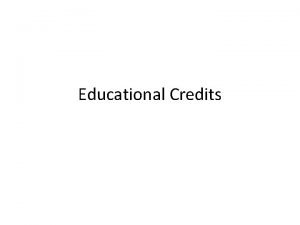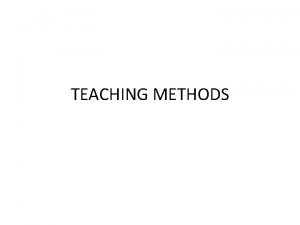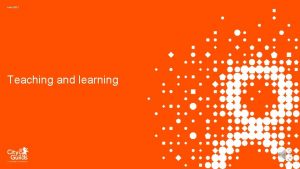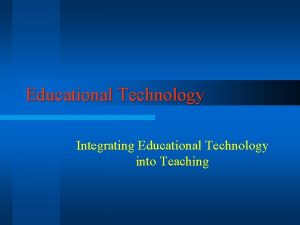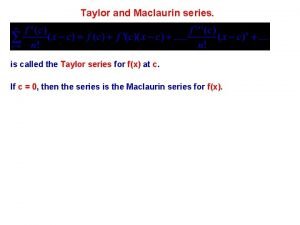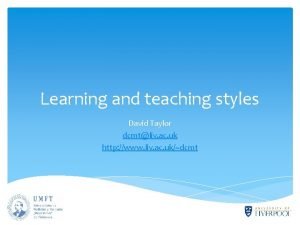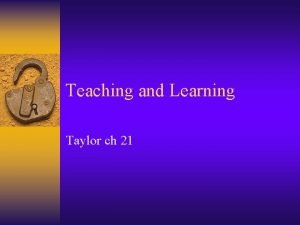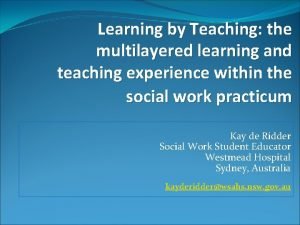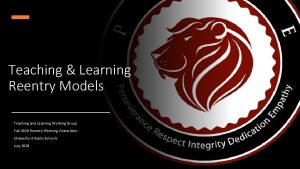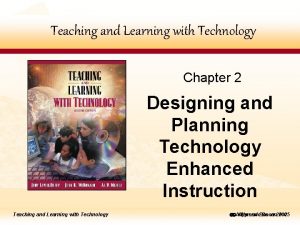Taylor Institute for Teaching and Learning Educational Development


























- Slides: 26

Taylor Institute for Teaching and Learning Educational Development Unit Mapping Life-long Learning: A Deep Dive into a Graduate Attribute Patti Dyjur, Ph. D Kim Grant, Ph. D University of Calgary

Taylor Institute for Teaching and Learning Educational Development Unit Agenda • Definition of life-long learning • Mapping life-long learning in an Engineering program • Discussion 2

Taylor Institute for Teaching and Learning Educational Development Unit Graduate Attributes - Engineering • Knowledge base for engineering • Problem analysis • Investigation • Design • Use of engineering tools • Individual and team work • Communication skills • Professionalism • Impact of engineering on society and the environment • Ethics and equity • Economics and project management • Life-long learning (Engineers Canada, 2017) 3

Taylor Institute for Teaching and Learning Educational Development Unit Life-long Learning • How might you go about teaching life-long learning? • And how in the world do you assess something that hasn’t even happened yet? 4

Taylor Institute for Teaching and Learning Educational Development Unit Definition of Life-long Learning An ability to identify and to address their own educational needs in a changing world in ways sufficient to maintain their competence and to allow them to contribute to the advancement of knowledge. (Engineers Canada, 2017) 5

Taylor Institute for Teaching and Learning Educational Development Unit Breaking Down the Definition • An ability to identify and to address their own educational needs in a changing world in ways sufficient to maintain their competence and to allow them to contribute to the advancement of knowledge. • Self-directed learning 1 • Maintain competence • Reflection 2 • Metacognition 2 1: Brennan, Eggermont, Rosehart, Deacon, Larson & O’Neill, 2014; Patterson, Labun & Eikenaar, 2016) 2: Borgford-Parnell, 2006 6

Taylor Institute for Teaching and Learning Educational Development Unit Characteristics of Lifelong Learning Working Definitions Self-directed Learning Identify and address one’s own educational needs 1 Maintain Competence Maintain professional competence by learning about new ideas and developments in the field Reflection The ability to put thought or conscious attention to experiences, actions and thoughts, with the goal of interpreting or analyzing them so to learn from them 2 Metacognition The thought process about one's own learning, specifically to plan, monitor and assess one's understanding 2 1: Brennan, Eggermont, Rosehart, Deacon, Larson & O’Neill, 2014; Patterson, Labun & Eikenaar, 2016) 2: Borgford-Parnell, 2006 7

Taylor Institute for Teaching and Learning Educational Development Unit Step 1: Workshop • Definition and characteristics of life-long learning • Examples of how each characteristic might be implemented in courses • Small group brainstorming and discussion to generate more examples specific to Geomatics Engineering 8

Taylor Institute for Teaching and Learning Educational Development Unit Step 2: Curriculum Mapping • Proposed process to identify what is currently being done in the program • Articulate which characteristics are being strengthened and at what point in the program • Identify which of the activities are graded 9

Taylor Institute for Teaching and Learning Educational Development Unit Mapping Life-long Learning 10

Taylor Institute for Teaching and Learning Educational Development Unit Decisions/ Assumptions for this Example • Map course outcomes to program-level learning outcomes (PLOs) • This example is simplified and only course outcomes that align with characteristics of life-long learning are included • Map activities/ assignments to course outcomes (to help with accreditation) • Indicate whether activities and assignments are graded or not • Only required courses are included as we do not know what options students will take • Again, the example is simplified for this presentation 11

Taylor Institute for Teaching and Learning Educational Development Unit Curriculum Links – Used to Map Courses 12

Taylor Institute for Teaching and Learning Educational Development Unit ENG 435 – Remote Sensing Course Report 13

Taylor Institute for Teaching and Learning Educational Development Unit 14

Taylor Institute for Teaching and Learning Educational Development Unit 15

Taylor Institute for Teaching and Learning Educational Development Unit Program Report What can we tell about Life-long Learning by examining aggregate data for required courses in the program? 16

Taylor Institute for Teaching and Learning Educational Development Unit Program Report – Geomatics Engineering 17

Taylor Institute for Teaching and Learning Educational Development Unit 18

Taylor Institute for Teaching and Learning Educational Development Unit Course Contributions to Characteristics of Life -long Learning 19

Taylor Institute for Teaching and Learning Educational Development Unit 20

Taylor Institute for Teaching and Learning Educational Development Unit 21

Taylor Institute for Teaching and Learning Educational Development Unit Small Group Discussion Questions • Given the data presented here, what changes could be made to enhance life-long learning in required courses across the program? • What are some advantages of presenting curriculum mapping data in these ways? • What questions do you still have regarding how life-long learning is addressed and assessed in this program? How could you find out? 22

Taylor Institute for Teaching and Learning Educational Development Unit Impressions • What are your impressions of using an approach such as this to investigate concepts such as life-long learning? • Are there any competencies/ characteristics/ initiatives that you would like to address in curriculum mapping? How might you approach the task? 23

Taylor Institute for Teaching and Learning Educational Development Unit Strategies/ Ideas to Map Other Concepts • Use terms and categories from accrediting or governing bodies • Read the literature to find out what is important about the concept • Talk to instructors • Pilot the mapping tool to see if any considerations or ideas are missing • Others? What other suggestions do you have for mapping beyond learning outcomes? 24

Taylor Institute for Teaching and Learning Educational Development Unit Comments/ Questions Thank you for participating in our session! 25

Taylor Institute for Teaching and Learning Educational Development Unit References Borgford-Parnell, J. (2006). Teaching and assessing life-long learning. Center for Engineering Learning and Teaching, University of Washington. Retrieved from: http: //depts. washington. edu/celtweb/wordpress/wp-content/uploads/2014/12/Assessing-Lifelong-Learning. pdf Brennan, R. W. , Eggermont, M. , Rosehart, W. , Deacon, A. K. , Larson, N. , & O’Neill, T. A. (2014). Assessing life-long learning in a first-year design and communication course. Proceedings of the Canadian Engineering Education Association (CEEA), 2014. doi: 10. 24908/pceea. v 0 i 0. 5855. Engineers Canada. (2017). Canadian Engineering Accreditation Board 2017 Accreditation Criteria and Procedures. Retrieved from https: //engineerscanada. ca/sites/default/files/accreditation-criteria-procedures-2017. pdf Patterson, L. , Labun, C. , & Eikenaar, J. (2016). Teaching and assessing “lifelong learning” in engineering communication courses. Proceedings of the Canadian Engineering Education Association (CEEA), 2016. Dalhousie University, June 19 -22, 2016. 26
 Taylor institute for teaching and learning
Taylor institute for teaching and learning Corset knight taylor
Corset knight taylor Development of teaching learning materials
Development of teaching learning materials Hong kong institute of educational research
Hong kong institute of educational research Dainis krištopāns
Dainis krištopāns Difference between micro teaching and traditional teaching
Difference between micro teaching and traditional teaching Cuadro comparativo entre e-learning b-learning y m-learning
Cuadro comparativo entre e-learning b-learning y m-learning English language teaching institute
English language teaching institute Educational research and development
Educational research and development Free state training and development institute (fstdi)
Free state training and development institute (fstdi) Emdidi
Emdidi Kenya industrial research and development institute
Kenya industrial research and development institute African institute for economic development and planning
African institute for economic development and planning Cognitive and appetitive faculties of the learner
Cognitive and appetitive faculties of the learner New jersey center for teaching and learning
New jersey center for teaching and learning How many total squares are there
How many total squares are there End goals of mtb-mle
End goals of mtb-mle Lausd teaching and learning framework
Lausd teaching and learning framework Assessment the bridge between teaching and learning
Assessment the bridge between teaching and learning Technical core: teaching and learning
Technical core: teaching and learning Uses of cd and dvd in education
Uses of cd and dvd in education Ib approaches to teaching and learning ppt
Ib approaches to teaching and learning ppt New jersey center for teaching and learning
New jersey center for teaching and learning 10 steps to independence daily 5
10 steps to independence daily 5 Assure model disadvantages
Assure model disadvantages What is contextualized learning
What is contextualized learning Transparency in learning and teaching
Transparency in learning and teaching
